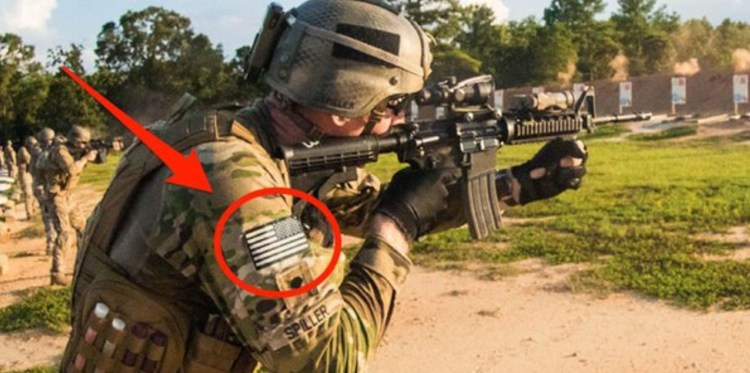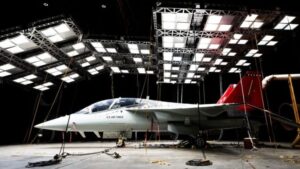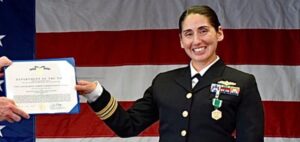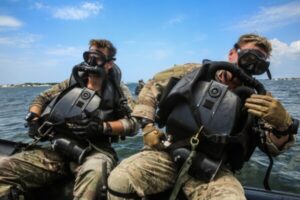Way back in the day, when I was on active duty, I remember my son asking me a question that has stuck with me. He was just a young boy at the time. He asked me why the flag on the sleeve of my uniform was backward. I told him that was a great question and that it really wasn’t flying backward; it was moving forward.
Being the curious sort, I had to research the matter a bit more. Here is what I found out:
The seemingly reversed appearance of the American flag on military uniforms actually serves a symbolic and traditional purpose. The practice dates back to the U.S. Civil War when flag bearers would charge into battle with the flag held high. As the flag streamed back in the wind, the stars, representing the union, always led the way, signifying progress and advancing forward.
Today, the “reverse flag” on military uniforms follows a similar concept. The American flag patch is commonly worn on the right shoulder, with the stars facing forward. This orientation is known as “assaulting forward,” symbolizing a mindset of moving ahead, never retreating. The stars are placed towards the front to replicate the effect of the flag appearing to fly in the wind as the soldier moves forward. This way, it mirrors how a real flag would appear if mounted on a moving object like a vehicle or a flagpole during forward motion.
The reverse flag design became formally incorporated into military uniform regulations with Army Regulation 670-1, which specifies that the flag must be oriented to give the effect of it “flying in the breeze” as the wearer moves forward. This unique approach visually emphasizes the military’s commitment to progress and the country’s enduring spirit while avoiding any impression of retreat.
Early in my training, I learned that we never retreat. Sometimes it was necessary to conduct a “retrograde action” but not a retreat.
Additionally, this configuration is specific to military and certain public service uniforms, like those worn by police and firefighters, ensuring the tradition remains a mark of honor and respect for those who serve.
When we as individual soldiers move forward into battle, we are carrying the flag as our forefathers have in conflicts past.
Semper Prorsum, “Always Forward.”
Way back in the day, when I was on active duty, I remember my son asking me a question that has stuck with me. He was just a young boy at the time. He asked me why the flag on the sleeve of my uniform was backward. I told him that was a great question and that it really wasn’t flying backward; it was moving forward.
Being the curious sort, I had to research the matter a bit more. Here is what I found out:
The seemingly reversed appearance of the American flag on military uniforms actually serves a symbolic and traditional purpose. The practice dates back to the U.S. Civil War when flag bearers would charge into battle with the flag held high. As the flag streamed back in the wind, the stars, representing the union, always led the way, signifying progress and advancing forward.
Today, the “reverse flag” on military uniforms follows a similar concept. The American flag patch is commonly worn on the right shoulder, with the stars facing forward. This orientation is known as “assaulting forward,” symbolizing a mindset of moving ahead, never retreating. The stars are placed towards the front to replicate the effect of the flag appearing to fly in the wind as the soldier moves forward. This way, it mirrors how a real flag would appear if mounted on a moving object like a vehicle or a flagpole during forward motion.
The reverse flag design became formally incorporated into military uniform regulations with Army Regulation 670-1, which specifies that the flag must be oriented to give the effect of it “flying in the breeze” as the wearer moves forward. This unique approach visually emphasizes the military’s commitment to progress and the country’s enduring spirit while avoiding any impression of retreat.
Early in my training, I learned that we never retreat. Sometimes it was necessary to conduct a “retrograde action” but not a retreat.
Additionally, this configuration is specific to military and certain public service uniforms, like those worn by police and firefighters, ensuring the tradition remains a mark of honor and respect for those who serve.
When we as individual soldiers move forward into battle, we are carrying the flag as our forefathers have in conflicts past.
Semper Prorsum, “Always Forward.”



